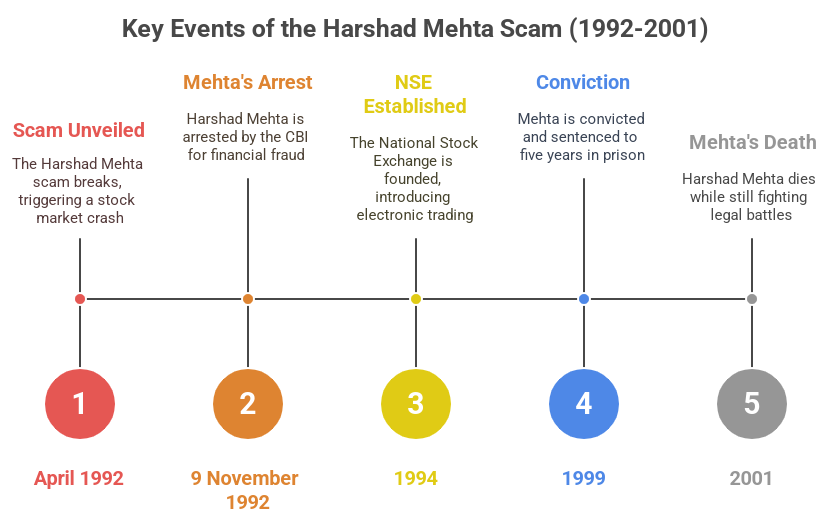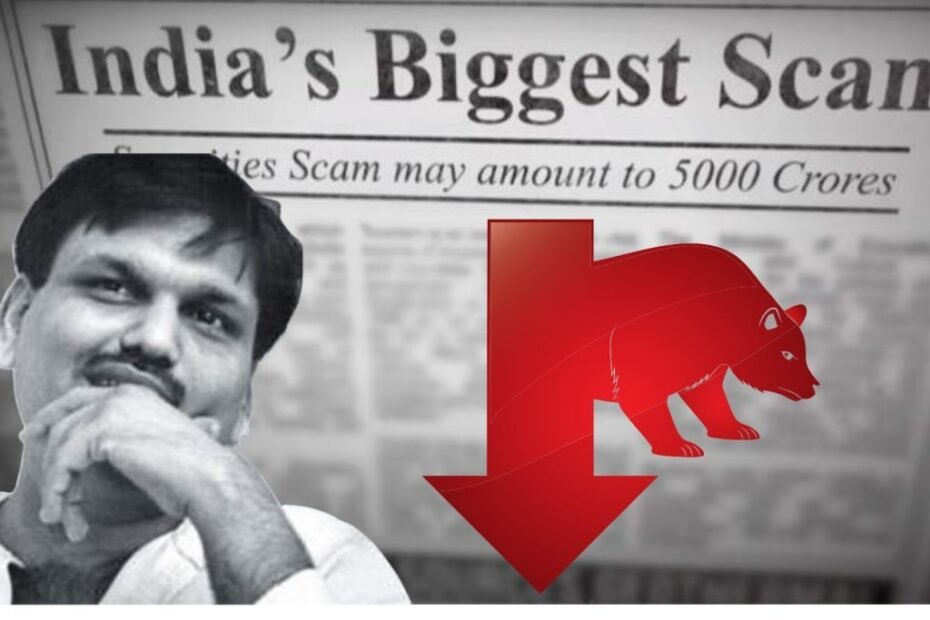Harshad Mehta Scam (1992): How India’s biggest financial fraud was revealed

What was Harshad Mehta scam?
The Harshad Mehta scam, also known as the 1992 Securities Scam, is the most notorious financial fraud in India’s history. The center was Harshad Mehta, a fiery stockbroker who manipulated the country’s banking system and the stock market to tune of ₹ 5,000 crore (₹ 50 billion). His manipulation sent shockwaves to the financial ecosystem and gave rise to long -lasting reforms in India’s capital markets.
How did the 1992 security scam was done?
Harshad Mehta’s scam was a web of fraud transaction that included exploitation of flaws in the banking system, especially using bank receipts (BRS) and ready forward (RF) deals.
1) Bank Receipt Fraud
A bank receipt (BR) is a document issued by one bank by one bank during short term funds lended deals supported by government securities. Mehta succeeded in achieving several banks to issue fake BRS, which is false in support of government securities. They were then passed to other banks in exchange for huge amounts.
With this illegal capital, Mehta artificially removed stock prices, especially companies such as ACC, Sterlite Industries and Videocon. For example, the ACC share price increased by ₹ 200 to 9,000 to 4,400% in a few months.
2) Manipulating Ready Forward Deals
In an RF deal, one bank later sells securities to another with the promise of re recurring them. Mehta acted as a broker in these deals, but turned the money into a stock market, often issued a check in his name. This allowed them to bypass banking criteria and create a speculative bubble in stock prices.
Impact of the fraud on Indian Economy
When the scam broke in April 1992, the Bombay Stock Exchange (BSE) Sensex crashed from 4,500 to 2,500, eliminating more than ₹ 1,000 billion in market capitalization. Investors especially middle class families cause mass damage. Public confidence in the stock market and banking system ended overnight. This scam not only shaken the trust of investors, but also exposed deep roots in India’s financial systems.
Major figures and institutions involved in the fraud
The scam revealed extensive collusion between banks, financial institutions, politicians and regulators. Many banks- such as Standard Chartered, Citibank and State Bank of India were accused of issuing or accepting fake BRs. Harshad Mehta also bribed the alleged powerful figures, in which the then Prime Minister P.V. Narasimha Rao for political security. These allegations highlighted the limits of lack of institutional corruption and monitoring.
Legal Battles and Conviction of Harshad Mehta
Following the risk of the scam, Harshad Mehta was arrested on 9 November 1992 by the Central Investigation Bureau of Investigation (CBI). He was accused of over 70 criminal offenses, including fraud share transfer and misuse of money. Although he was acquitted in several cases due to lack of evidence, Mehta was eventually convicted in 1999 and sentenced to five years of rigorous imprisonment. He died in 2001, while still fighting a legal battle.
Transformation in Indian Financial System after the Scam
Harshad Mehta scam improved India’s financial infrastructure. These changes were important in modernization of the Indian stock market and restoration of investors.
1) Constitution of National Stock Exchange (NSE)
The scam highlighted manual and opaque practices on the Bombay Stock Exchange. This inspired the establishment of the National Stock Exchange (NSE) in 1994, which introduced electronic trading and reduced the risk of manipulation.
2) Reforms in Corporate administration
The Confederation of the Indian Industry (CII) proposed the corporate governance code post-scam, which was later adopted by SEBI (Securities and Exchange Board of India). These help in improving transparency and accountability in listed companies.
3) Reconstitution of Regulation regarding bank receipts and RF
The Jankiraman Committee constituted to investigate the scam, recommended strict regulation of BRS and RF deals. The use of fake BRS was closed by limiting such deals for government securities, and mechanisms were installed for strict investigation of interbank transactions.
Lessons learned from the scam
The Harshad Mehta scam remains a historical case in financial fraud which can expose uncontrolled ambition and systemic flaws, its careful story. This underlined the important requirement of strong regulation, accountability and investor protection.
While Mehta’s works destroyed thousands of families and institutions, followed by a more transparent, regulated and technology-powered stock market in India. His story serves both as a warning and a significant twist in Indian financial history.
Conclusion
The 1992 Harshad Mehta scam not only left India’s financial foundation it replaced them. This forced regulators, policy makers and financial institutions to face systemic flaws and create a strong, more flexible capital market. Today, even after decades, the scam is studied for its sheer scale, boldness and regulatory revolution.
Scam in short
- Scam amount: ₹ 5,000 crore
- Main fraud: fake bank receipts, ready deals
- Effect: Stock market down by 40%, 1,000 billion erased
- Improvements started: NSE, SEBI Regulations,
- Governance Code Heritage: India’s most notorious financial scam and a catalyst for market modernization
Share this article with your network and help spread financial awareness!
